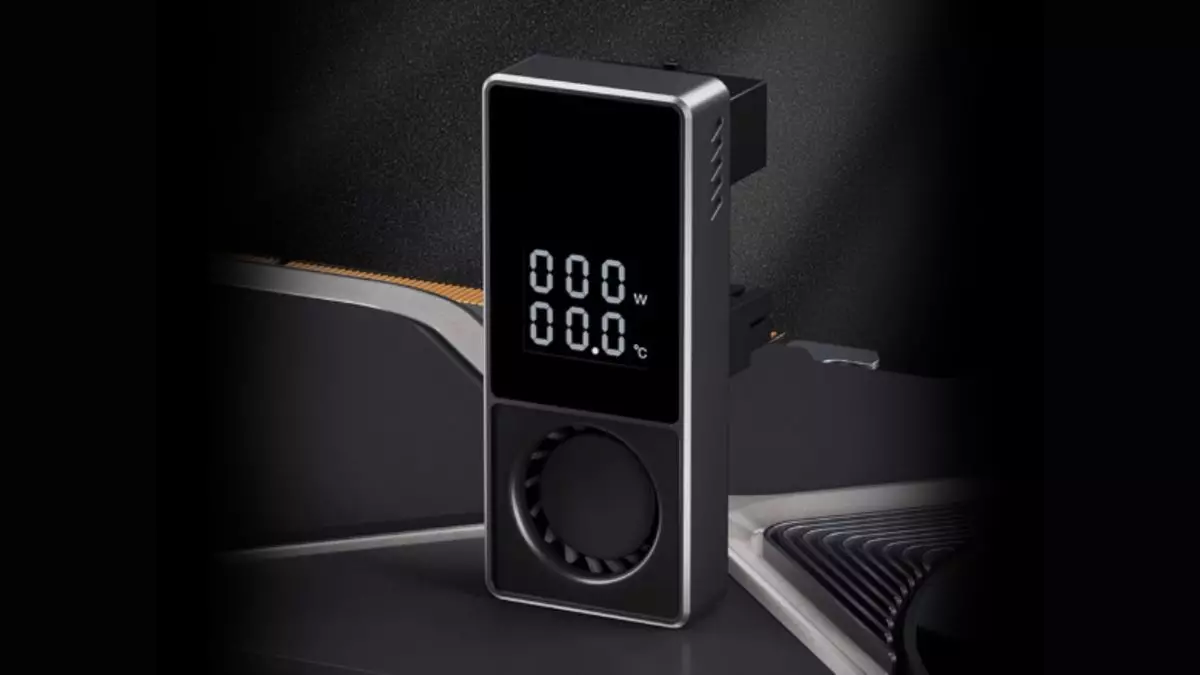The graphics card industry is in a state of rapid evolution, particularly with the recent introduction of the RTX 50 series. However, in the midst of this transition, a significant number of gamers still gravitate towards the RTX 40 series cards. This preference can largely be attributed to the accessibility issues surrounding the latest models. As higher power demands become increasingly evident in current graphics technology, innovative solutions are emerging to address the inherent challenges faced by these power-hungry components.
With the performance thresholds of graphic cards elevating, gamers are more concerned than ever about power consumption and thermal management. Enter a new product from K.A, showcased on the popular Chinese shopping platform TaoBao: a 16-pin graphics card adapter that features built-in fans and a display for real-time monitoring of temperature and power consumption. Priced at around 229 RMB (approximately 30 dollars), this device is positioned as a cost-effective measure for enhancing the operation of RTX 40 series graphics cards.
This 180-degree adapter is ingeniously designed to sit beside the GPU, facilitating not only a seamless installation but also active cooling of the crucial power delivery wires. While the performance boost itself comes from the graphics cards, the adapter adds an element of safety by keeping the cables cool, thus reducing the risk of overheating, a concern that has been magnified with the introduction of high-TDP (Thermal Design Power) components.
With cutting-edge GPUs such as the RTX 4090 garnering attention, the industry has faced issues with melted connectors, attributed to both the design of the 12VHPWR connector and the frequent oversight of users not fully seating the cables. To combat these concerns, companies like MSI have begun producing cables with features intended to signal proper connection, highlighting the industry’s acknowledgment of these potential hazards.
Despite improvements, the risks associated with third-party adapters cannot be overlooked. Experts in power supply units (PSUs) have warned that using third-party products can lead to complications, despite their potential to serve as quick solutions. The cautioning narrative underscores the importance of choosing the right PSU and relying on cables manufactured specifically for those units. A carefully considered setup minimizes risks and ensures a more efficient, stable performance for high-end gaming rigs.
While the K.A adapter holds potential as an additional accessory for those utilizing the RTX 40 line, its limited compatibility may prevent it from transforming the market for graphics card accessories entirely. However, it does illuminate a path forward for innovation in this arena. The imminent release of RTX 50 series cards may be accompanied by heightened consumer interest in integrated monitoring solutions among GPU and PSU manufacturers.
As enthusiasts begin to overclock models such as the RTX 5070 Ti and the yet-to-be-released RTX 5080, the demand for enhanced cooling solutions and real-time monitoring is expected to grow. Gamers are looking not just for components that offer immense performance but also for tools that provide comprehensive visibility into system health and operational metrics.
As the gaming community embraces the advancements in graphics cards, it is crucial for manufacturers to foster innovation in safety and monitoring features. The K.A adapter serves as an early indicator of what the future may hold. However, users must balance the excitement of new technologies with a commitment to safe practices.
While the introduction of new hardware and accessories expands possibilities for high-performance gaming, it is essential to approach their use with caution and awareness of potential risks. Future developments must emphasize both performance and reliability, ensuring that gaming environments remain safe and enjoyable for all. Moving forward, one can only hope that meaningful advancements in this sector continue to emerge, fostering both creativity and security for the digital pursuits of gamers worldwide.

